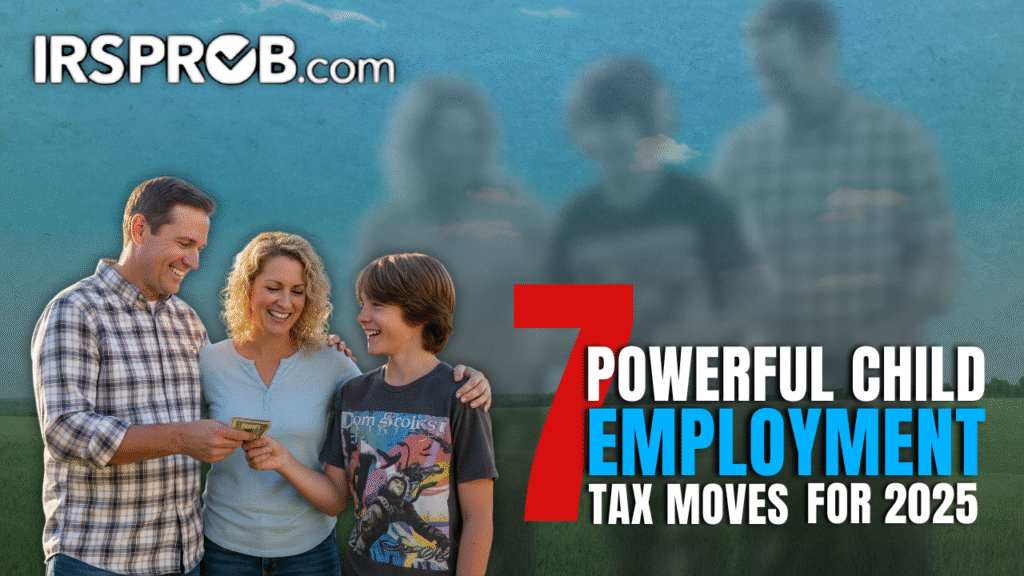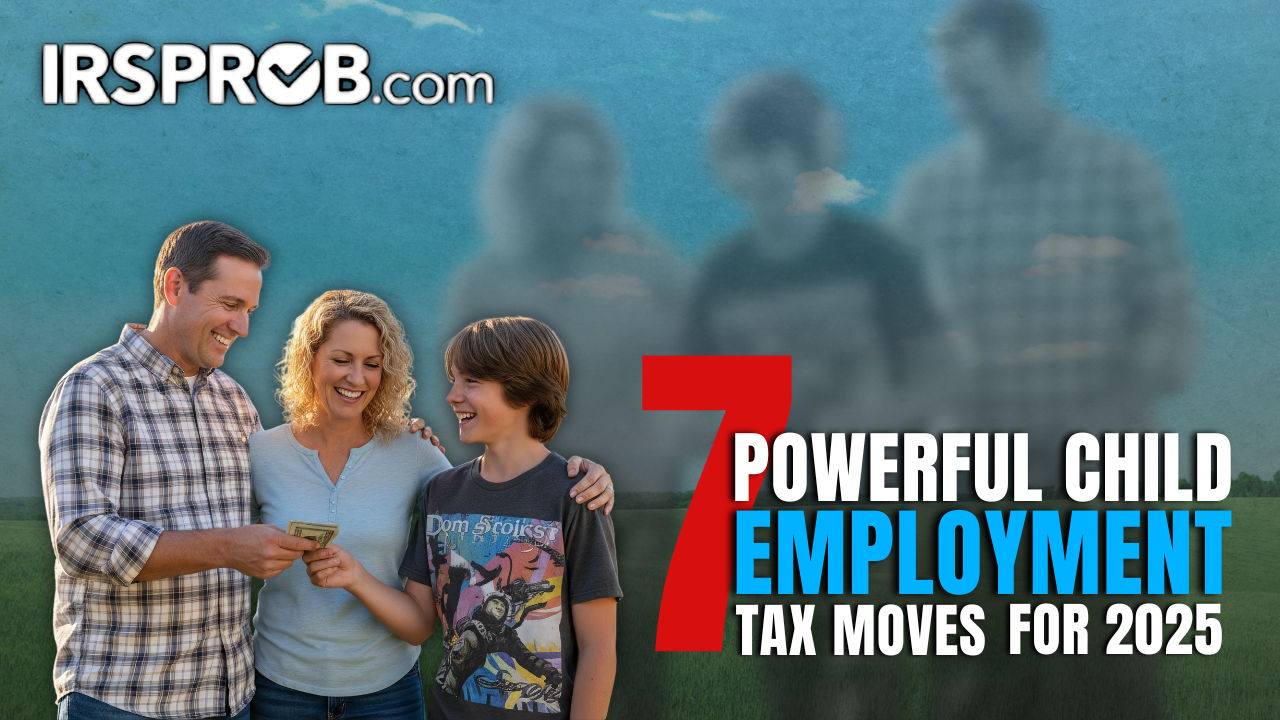
You run a small business. Your kid wants to earn money (and you’d rather keep wealth in the family than ship it to the IRS). Good news: child employment—done by the book—can cut your taxes and pay your child tax-free wages in 2025. I’ll keep this plain, quick, and specific, with links you can actually use.
Why “Child Employment” Belongs in Your 2025 Playbook
The big lever: tax-free wages for kids
When a child works in a parent’s business for fair pay, those wages can be tax-free to the child up to the 2025 standard-deduction ceiling for single filers—meaning your child can keep a healthy chunk (and you deduct the wages as a business expense). See our breakdown of the 2025 standards here: Standard Tax Deduction: 2025 Guide.
What changed (and why this matters now)
Recent law tweaks (often discussed as “OBBBA/OBBB”) and ongoing inflation adjustments kept the spotlight on higher standard deductions and a simpler path for many families to benefit from wages paid to kids. For context and recent coverage, check IRSProb’s hiring-kids explainer and compare with the IRS’s employer rules in Publication 15.
Who Can Use Child Employment and Who Can’t
Yes: self-employed parents and small businesses
Sole proprietors and spouse-only partnerships (filing Schedule C) get the most generous treatment when hiring their under-18 kids. In these setups, FICA (Social Security + Medicare) doesn’t apply to the child’s wages under age 18, and FUTA (unemployment) doesn’t apply under age 21—a huge payroll-tax win. The rules flow from the Internal Revenue Code and are summarized in IRS employer guidance.
Pay Only for Real Work (and Document It)
Keep it legit
I can’t stress this enough: pay reasonable wages for actual tasks—filing, packing, customer research, content creation, basic bookkeeping, product photos, social scheduling, inventory counts. Log hours, keep job descriptions, save sample outputs (screenshots, drafts), and pay through normal payroll or proper W-2/*when applicable*. A crisp paper trail turns “we did this” into “we can prove this.”What not to do
How to Calculate the Win
Step 1: Set a fair wage
Price your child’s tasks like you would a part-time assistant. If social media work fetches $15–$20/hour locally, stay in that lane. Keep a short memo: “Rate set by local benchmark; tasks: draft captions, crop images, schedule posts.”
Step 2: Track hours and cut checks
Use a simple timesheet (Google Sheets is fine). Pay on a schedule. Issue a W-2 if payroll applies to your entity. Use IRS Publication 15 to confirm withholding requirements, and see Pub. 334 for small-business expense rules.
Step 3: Reflect it on your return
Your business deducts the wages as an expense; your child reports wages on their return. If wages don’t exceed the year’s standard deduction, federal income tax owed by the child may be zero. For an overview of employing family members (and how the FICA/FUTA age breaks work), see this professional summary and code cites.
Advanced Moves Most Families Miss
Open a Roth IRA for your kid
Wages = earned income. That unlocks Roth IRA contributions for your child (subject to annual limits). It’s a stealth wealth play: decades of potential tax-free growth. (Watch “kiddie tax” rules for unearned income like dividends/interest—different animal.)
Split methods for space, but don’t stretch the rules
If the business uses part of your home (separate issue from child employment), learn the simplified vs. actual-expense methods for the home-office deduction.
Tie pay to real deliverables
Pay per deliverable (e.g., $25 per edited product photo set) to match value and timing. It’s easier to price fairly and document results.
Compliance Checklist (Short and Useful)
- Right entity? Schedule C and spouse-only partnerships enjoy the biggest payroll-tax breaks when hiring under-18 kids (FICA) and under-21 (FUTA). Corporations don’t.
- Real work + fair pay? Yes, always.
- Records? Timesheets, job descriptions, samples of work, pay stubs.
- Payroll setup? Use Pub. 15 and 15-T for withholding tables and mechanics when applicable.
- Return prep? Your deduction on the business return; your child files as needed. For Schedule C concepts, scan Pub. 334.
Real-World Mini Example (Clean Numbers)
Let’s say you’re a sole proprietor. Your 15-year-old spends the summer taking product photos and editing clips for your store. You pay $10,000 at a reasonable hourly rate.
- Your child keeps the whole $10,000 federally tax-free if it sits under the standard deduction threshold for 2025 (and there’s no FICA for under-18 in this parent-business setup).
- You deduct $10,000 as wages—lowering both your income tax and, for Schedule C filers, self-employment tax.
FAQs (Short, blunt, and helpful)
Quick summary about Child Employment
- Child employment can be a 2025 tax-saver when your kid works in your business for fair, documented pay.
- Schedule C + spouse-only partnerships get the strongest payroll-tax breaks (no FICA under 18; no FUTA under 21). Corporations don’t.
- Keep it clean: job descriptions, timesheets, deliverables, and proper pay.
- Pair wages with a Roth IRA for your child if you really want to play the long game.
- For 2025 numbers and planning angles, see our internal guides at IRSProb below.







